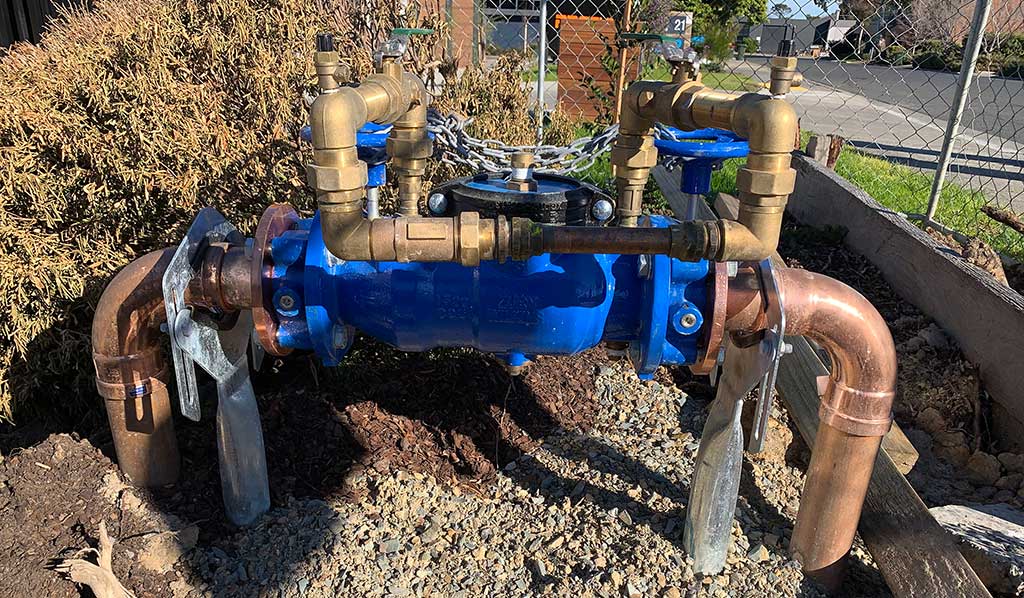Water is 1 of our own most important resources, and making sure its safety should be a top priority with regard to everyone. Backflow tests is an essential yet often overlooked element of maintaining the reliable hydrant, and even it plays a vital role in preventing prospective contamination. With typically the rise of industrial activity, landscape water sources, and increasing urban development, the hazards linked with backflow have never been more substantial. Understanding backflow tests as well as its importance can mean the variation between clean drinking water and the serious health risk for you and your family.

In this post, we will delve into the necessities involving backflow testing, discussing why it's required for both houses and businesses. We'll explore how generally you must schedule checks, the warning warning signs that indicate the need for immediate testing, and the particular common reasons behind backflow that can endanger your water top quality. By the end, you'll possess a comprehensive understanding of backflow testing and precisely why it deserves some sort of prominent spot on your maintenance checklist.
Comprehending Backflow Testing
Backflow screening is a critical process built to ensure that your water supply remains safe and clean. It requires checking the backflow prevention devices installed in your property's plumbing system. These types of devices are necessary for stopping contaminated water from flowing backside into the primary water supply, which can occur due to adjustments in pressure inside the system. Without suitable backflow prevention, damaging substances can enter in your drinking water, posing significant health risks to an individual and your community.
The importance of backflow tests cannot be overemphasized. Regular testing assists identify any issues with your backflow prevention devices, letting for timely maintenance or replacements. This particular preventative measure is not just about protecting public well-being but also regarding complying with community regulations. Many locations have laws demanding specific schedules with regard to backflow testing, underscoring the necessity of maintaining a new safe hydrant with regard to everyone.
Understanding what backflow testing entails is vital for home owners. During a new backflow test, the certified technician assess the performance of your backflow elimination device. The procedure includes checking for any leaks or even failures which could give up the safety with the water supply. By staying informed about backflow testing and its implications, an individual can help guard your property in addition to help the overall well being of your neighborhood.
Importance and Frequency of Testing
Backflow testing is actually a crucial component to maintain the safety involving your water supply. It ensures that pasable water remains uncontaminated, protecting both the health and that associated with others in the neighborhood. Standard testing helps recognize potential issues just before they escalate into serious problems, this kind of as contaminated water to drink. As public knowing of water safety boosts, property owners are usually realizing the important role backflow assessment plays in guarding their health insurance and wellbeing.
Exactly how often you ought to schedule backflow assessment will depend on various factors, including local regulations along with the type regarding property you own. Intended for most residential properties, annual testing is certainly recommended to make sure backflow prevention devices are really functioning correctly. Industrial properties, in particular those using more complex techniques, may require additional frequent inspections. Sticking to any local testing schedule is essential, because it helps conform to legal requirements although ensuring the security of your water present.
Disregarding backflow testing may lead to serious consequences, such while contaminated water to drink, which often can cause health issues and costly maintenance. By prioritizing screening and maintenance, home owners not merely accomplish legal obligations but also demonstrate a commitment to public health and safety. Establishing a regular tests schedule remaining informed about the needs in your region can significantly reduce the risks connected with backflow and safeguard both your house and the community at large.
Backflow Prevention Ideal Practices
To ensure the safety and high quality of your water supply, implementing backflow avoidance best practices is definitely crucial. Regular maintenance of backflow elimination devices is a new key aspect. https://backflowinspector.ca and property professionals should schedule twelve-monthly inspections and screening with certified professionals to confirm that will devices are functioning correctly. Keeping appropriate records of these types of inspections is fundamental for compliance using local regulations plus for tracking typically the device’s performance after some time.
Along with regular testing, homeowners should educate on their own and their staff regarding the signs of potential backflow challenges. This includes knowing unusual water stress fluctuations, discoloration regarding water, or unusual tastes and scents. Being proactive in identifying these issues can cause swift steps, preventing contamination just before it occurs. In addition, making sure that the area around the backflow preventer is sharp of debris and even accessible for maintenance is important.
Another important practice is to ensure that any irrigation systems or auxiliary water resources are installed using proper backflow avoidance measures. This relates to commercial properties, industrial facilities, and multi-family residences alike. Always consult with a certified backflow tester to recognize the specific requirements and best practices for your property sort. By fostering the culture of recognition and diligence around backflow prevention, house owners can shield their hydrant and even contribute to typically the overall safety involving their community.
